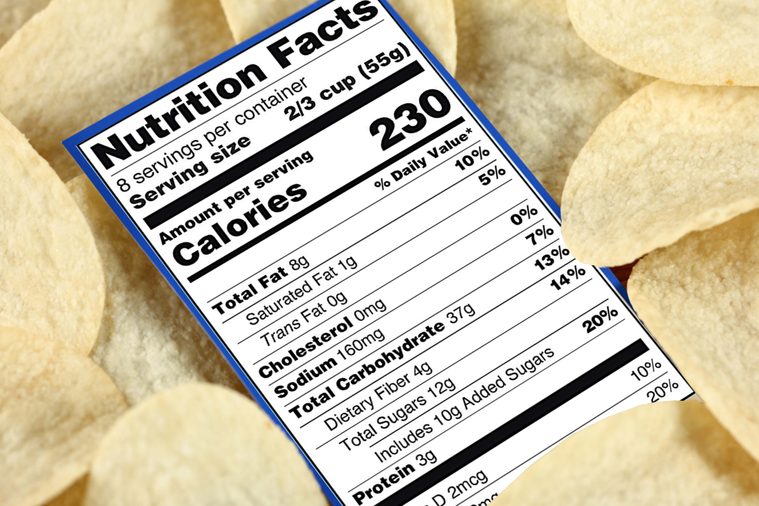
Don’t get hung up on calories
The new label has some advantages over the old one, though one debatable one is that it makes calorie count even more prominent. That’s only so helpful: The idea that a calorie is a calorie no matter where it comes from is outdated. For example, an average 3 oz piece of grilled chicken has about 128 calories, according to the USDA Food Database. But so does an ounce of refrigerated chocolate chip cookie dough. The chicken boasts 26 grams protein and zero sugar; that cookie dough has 1 gram protein and 6 grams sugar. In other words, the calories from each are far from equal. Here’s how to decode the tricky words on food labels.
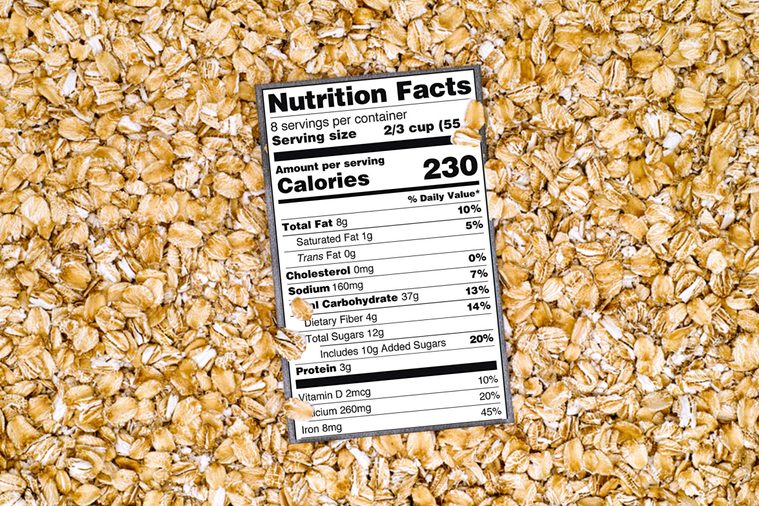
Serving size (and waist?) expansion
The last time serving sizes changed was in 1993. Because packaging sizes have blown up since then, the Food and Drug Administration has mandated that serving sizes should reflect what people are truly eating versus a recommended serving. The downside is that you may actually end up eating more. The reference serving size for ice cream used to be a half-cup. It’s now two-thirds cup, a difference of about 40 calories for vanilla ice cream. Eat that three times a week for a year and you’re looking at a potential gain of nearly two pounds.
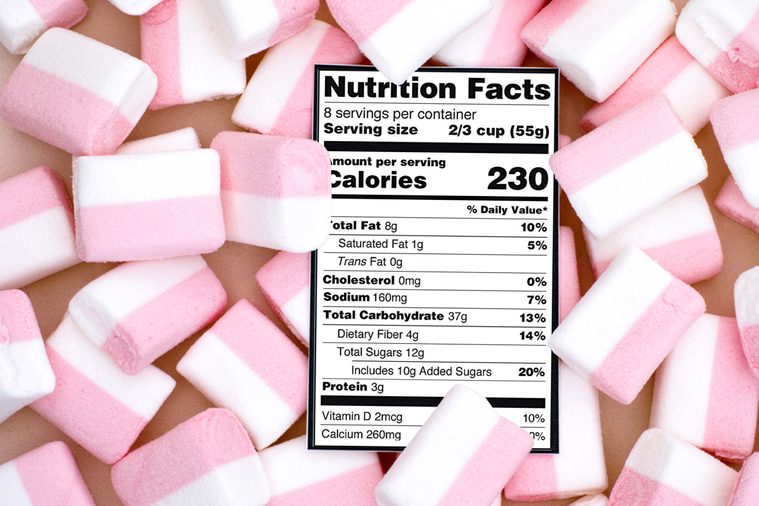
Where’s the sugar?
One of the biggest benefits of the new label is that consumers won’t need a degree in food science to figure out how much added sugar is in their food. On the old label, a food’s natural sugar and the added sweet ingredients—think brown rice syrup, agave nectar, dextrose, maltose—were all on one line. Just make sure you look for that separate line for “Added Sugars,” because it will include supposedly healthy sweeteners like honey and concentrated fruit juices. Ignore these empty calories at your waist’s peril. Here are more secrets for healthier grocery shopping.
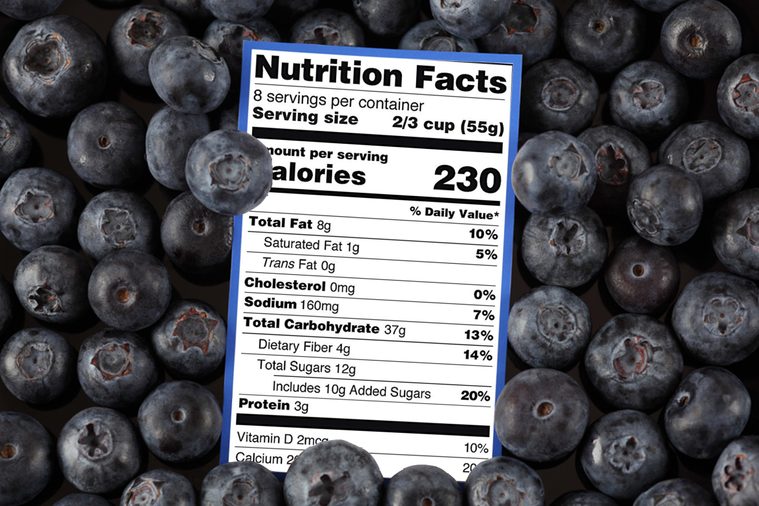
How much sugar is too much?
The updated nutrition label now indicates a percent Daily Value for added sugars. Scientific findings of the U.S. Dietary Guidelines Committee supports the link between added sugars and chronic diseases such as type 2 diabetes. The recommendation is that intake of added sugar be no more than 10 percent of calories. If you’re following a 1,700-calorie diet, that would mean you can have 170 calories (37.5 grams per day) from added sugar—just more than what you’d find in a 12 oz can of lemon-lime soft drink. Right now, adults consume about 13 percent of calories from added sugar. That extra 3 percent could mean a six-pound weight gain in a year.
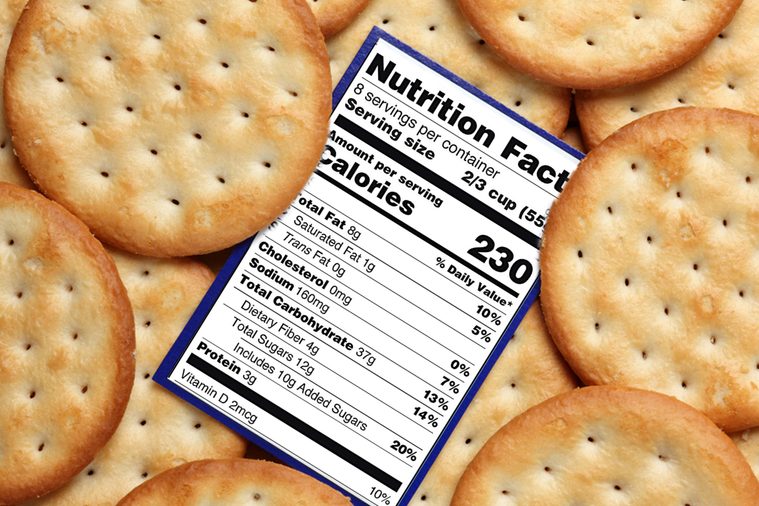
Fats are ok, to a point
Sugar is out and fat is in. But while the label will no longer indicate how many calories from fat a food has, you still need to use caution around saturated and trans fats—they can really damage your arteries and heart, according to the Presidential Advisory from the American Heart Association. For coconut oil lovers out there, keep in mind each tablespoon has upwards of 11 grams of saturated fat. You won’t find added artificial trans fats anymore, but some foods such as meat have natural trans fat. Keep in mind the label can declare zero trans fat if less than 0.5 grams per serving. Find out the ways you’re reading food labels wrong.
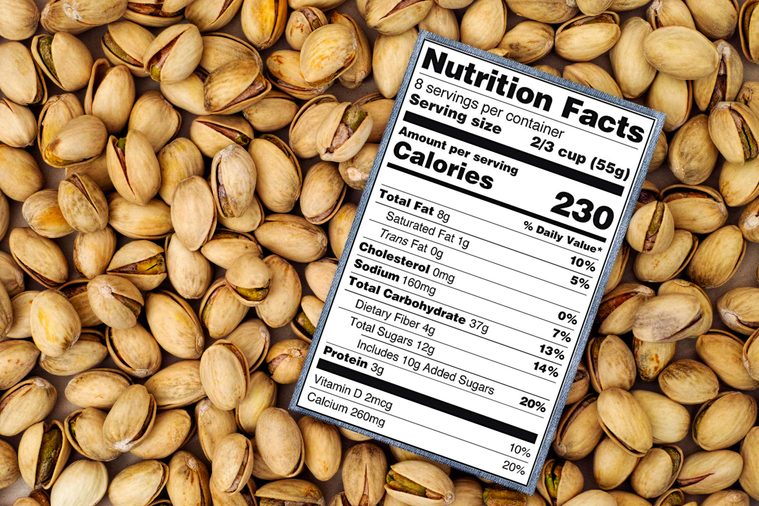
More fat… really?
Another interesting change to the label that might be misleading for some: The Daily Value for fat has jumped from 30 percent to 35 percent. Research has indicated that some fats are actually good for us, such as the unsaturated fats found in salmon and nuts, avocado, and healthy oils like olive and canola. That said, at nine calories per gram, that extra 5 percent could potentially add up to an extra eight pounds per year based on a 1,500 calorie diet.
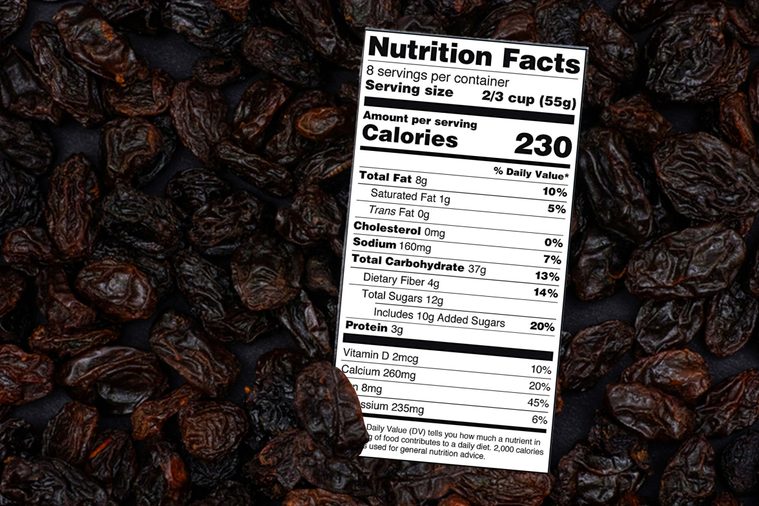
Other nutrient changes
Manufacturers must now list vitamin D and potassium on the nutrition label as they are seen as nutrients Americans are chronically falling short on. The FDA hopes to boost our intake of these good-for-you nutrients by making them mandatory additions to the label. If you don’t get enough of these nutrients, you’re setting yourself up for diseases such as high blood pressure and heart trouble. Don’t miss these food packaging and food labeling tricks you still fall for.
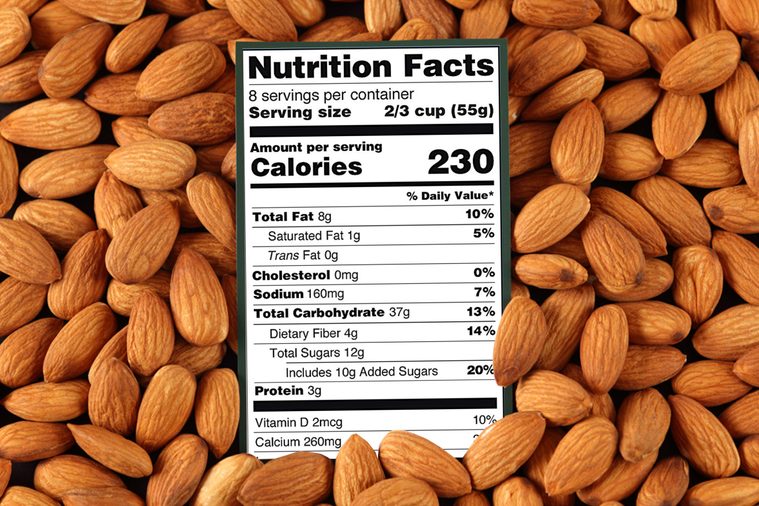
Read holistically
Look at the label as a whole as opposed to looking at individual parts. As you peruse products, pay attention to the quality of calories, the suggested serving size, and the overall serving size for the package. Then glance at the type of fat, the amount of added sugar, and foods that offer good nutrition like plenty of vitamin D and potassium to adopt a healthier eating pattern and lead to a more svelte you. Next, find out the 14 unbelievable food facts that will change how you eat.